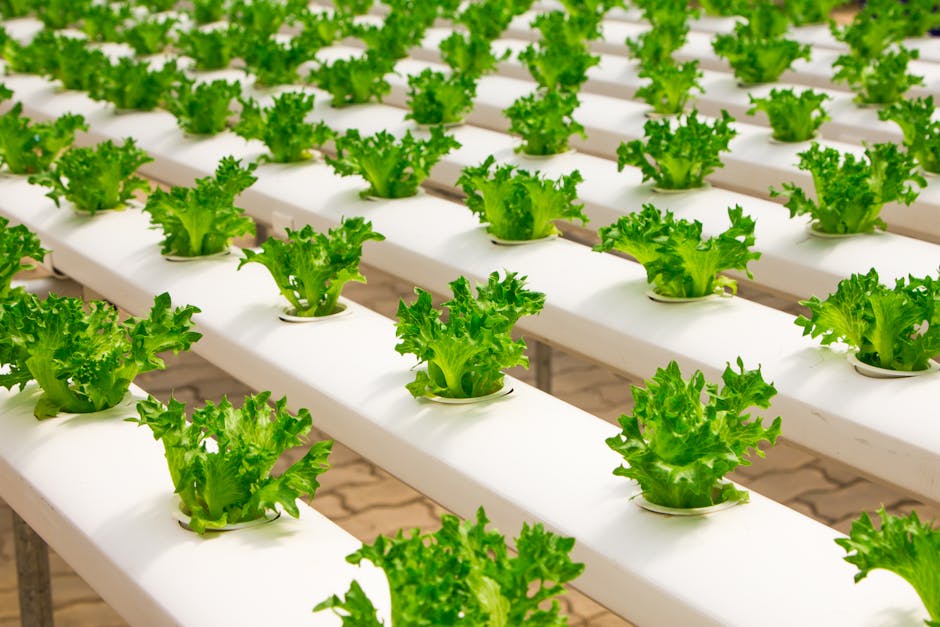Introduction: Food Meets Innovation
Technology is reshaping every layer of the food industry, creating a ripple effect that touches how food is grown, processed, distributed, and consumed. What was once a traditional field rooted in manual labor and long-established systems is now embracing new tools and ways of thinking.
A Full-Spectrum Transformation
From automated farms to AI-powered kitchens, innovations are streamlining operations across the entire food supply chain. This transformation is not happening in isolated pockets—it’s a comprehensive evolution from farm to fork.
Key areas being transformed include:
- Agriculture: Sensors, drones, and data analytics inform planting and irrigation decisions.
- Manufacturing: Robotics and machine learning enhance food safety and operational speed.
- Distribution: Blockchain offers transparency and traceability every step of the way.
- Retail: Smart shelves, personalized shopping apps, and contactless checkout redefine consumer experience.
- Consumption: Smart kitchen appliances and personalized nutrition unlock new levels of convenience and health awareness.
Why This Shift Matters
The integration of technology brings significant benefits for all key players in the food ecosystem:
- Producers can increase efficiency, reduce waste, and meet sustainability goals.
- Retailers gain deeper insights into customer behaviors and optimize inventory.
- Consumers enjoy safer, faster, and more personalized food experiences.
Ultimately, technology is not just enhancing how the industry operates—it’s redefining what’s possible.
Smarter Farming with AgTech
Farming isn’t just about soil and sweat anymore. It’s increasingly driven by data—and it shows. Precision agriculture is at the core of this shift, with drones and ground-based sensors mapping fields, monitoring crop health, and delivering insights down to the square meter. Farmers now know exactly when to water, where to fertilize, and how much to spray, cutting waste while maximizing yields.
Then there’s vertical farming and hydroponics—systems that throw the old field-based model out the window. These methods stack crops indoors, often without soil, using LED light and nutrient-rich water. The result: more food per square foot, year-round. It’s especially taking root in urban centers and places where arable land is scarce.
The promise isn’t just more output. It’s smarter use of resources. In early case studies, water use drops by up to 90%, and pesticide usage nearly disappears. A farm in Kentucky has pumped out over 30 times the lettuce per acre compared to traditional growers—all inside a warehouse.
Bottom line: tech-driven farming isn’t a trend—it’s becoming the standard. And it’s giving producers a fighting chance against a changing climate, rising costs, and a growing population.
Automation & Robotics in Food Production
Advancements in automation and robotics are redefining how food is produced, packed, and delivered. As the industry faces labor shortages and increasing pressure to scale efficiently, smart machines are stepping in to fill the gap without compromising quality or safety.
Streamlining the Production Line
Modern food manufacturers are embracing automation from end to end. Robotic systems are being used to handle repetitive and time-consuming tasks, including:
- Sorting: Machines use machine vision and sensors to grade and sort produce rapidly and accurately.
- Processing: Automated equipment helps mix, bake, or cook food with precise control.
- Packaging: Robotics are speeding up the packaging process while reducing material waste and contamination risks.
These improvements not only increase efficiency but also reduce human error, improving both consistency and food safety.
Labor Challenges and Machine Solutions
Workforce availability in food processing has become a major industry pain point. Low wages, physically demanding work, and health-related disruptions have made staffing increasingly difficult. Robotics and automation offer reliable solutions to bridge this gap:
- Consistent Output: Machines operate around the clock, making up for labor shortages.
- Reduced Physical Strain: Automation lessens the need for manual labor in strenuous roles.
- Upskilling Opportunities: Workers shift toward supervisory and technical roles, creating pathways for growth.
Balancing Safety, Speed, and Scale
As automation becomes more widespread, companies face the challenge of maintaining high production speeds without sacrificing safety or quality. The most successful implementations share a few core practices:
- Food Safety Protocol Integration: Automated systems integrated with real-time monitoring ensure hygiene standards are met.
- Modular Scalability: Facilities can scale automation in phases, adjusting for demand.
- Fail-Safes and Human Oversight: Smart systems that involve both machine and human checkpoints reduce the risk of errors.
Ultimately, automation is not just about speed—it’s about building resilient, responsive food systems for the future.
AI, Data, and the AI-Driven Kitchen
Food isn’t just about flavor anymore—it’s about forecasting. AI is reshaping how the food industry handles everything from inventory control to kitchen operations. Predictive systems now help grocers and restaurants avoid waste by analyzing sales patterns, weather trends, and even local events to forecast demand. Instead of overflowing shelves or empty fridges, businesses can now balance stock with almost surgical precision.
Shelf-life? AI’s keeping tabs on that, too. Sensors and software track freshness in real time, alerting staff before spoilage becomes a problem. Smart labels are emerging that quietly monitor temperature changes, helping food stay viable longer—and making recalls faster and more targeted when things go south.
In the front of house, appliances are getting a brain. Smart ovens in restaurant kitchens adjust cooking times based on humidity and ingredient density. In home kitchens, AI-powered assistants learn your habits, suggest recipes based on what’s in the fridge, and even automate grocery lists.
Restaurant chains are also using predictive analytics to plan menus and pricing, based on real-time consumer preferences. Think less guesswork and more data-backed dishes. When done right, AI doesn’t just streamline operations—it makes kitchens smarter, more sustainable, and more responsive to what diners actually want.
Blockchain & Transparency in the Supply Chain
Food travels a long and complex journey—farm to processor, processor to distributor, distributor to retailer. Somewhere along the way, trust can fall through the cracks. Whether it’s mislabeled origin claims, contamination scares, or flat-out food fraud, consumers are demanding answers and accountability. That’s where blockchain steps in.
Blockchain creates a permanent, tamper-proof record of each transaction in the food supply chain. From grain harvested in Nebraska to salmon caught in Norway, it logs every handoff, every checkpoint. Scan a QR code on a package and, in theory, see the full trip your food has taken. This kind of radical transparency goes beyond marketing—it’s about safety and certainty.
When recalls happen, blockchain helps cut through the chaos. Companies can pinpoint the contamination source, fast. That shaves days off response times and dramatically reduces waste. It also makes origin claims harder to fake, an added layer of defense against deceptive labeling.
Major retailers and food giants are already testing and deploying blockchain systems. Walmart’s leafy greens, Carrefour’s chicken, even Starbucks’ coffee—all tracked on the chain. It’s not science fiction. It’s logistics meeting accountability.
In a landscape full of wary consumers, digital transparency is no longer optional. It’s the price of trust.
Personalized Nutrition & Consumer Tech
Food isn’t one-size-fits-all anymore—and tech is closing the gap between what your body needs and what ends up on your plate. Diet apps have evolved from basic calorie counters into full-blown health command centers. They sync with wearables, pull in real-time data, and push out insights that actually make sense: when to eat, what to avoid, how your blood sugar responds after lunch.
DNA-based nutrition has moved from niche to near-normal. People are swabbing cheeks, mailing it in, and getting personalized diet plans built on their genetic quirks. It’s no longer just about keto or vegan—it’s about what your body was predisposed to do with carbs, caffeine, or vitamin D. Food companies are taking note. They’re slicing customer data into insights, then shaping product offerings to match micro-segments—think protein bars for slow metabolizers or gut health snacks tailored to your biome.
And the supplement aisle? That’s becoming a lab. Personalized vitamins, functional beverages, and ingestibles built around your lifestyle, wearable data, and diet patterns are exploding. Instead of stocking shelves for the masses, brands are now crafting subscription-based, data-informed wellness stacks for individuals.
The message is clear: the more data you give, the more tailored your nutrition gets. Privacy concerns aside—that personalization is changing how people eat, shop, and even think about food.
The Future of Shopping & Eating
The way we buy and consume food is getting a full-on tech upgrade. Contactless grocery tech is becoming less of a novelty and more of a baseline expectation. Think smart carts, automatic checkouts, and stores where you never have to pull out your wallet—or even talk to a human. Amazon Go led the charge, but now supermarkets everywhere are adapting to shoppers who want frictionless experience and zero lines.
Delivery is evolving too. It’s not just about getting food fast anymore—it’s about how it gets there. Drones are quickly moving from pilot programs to city skies, robotic couriers are navigating sidewalks, and AI-backed logistics platforms are tightening delivery windows to minutes, not hours. For restaurants, this means reaching more customers without building more storefronts.
On that note, welcome to the rise of virtual restaurants and cloud kitchens. These kitchens have no dine-in seats, just chefs, screens, and a delivery system. They’re lean, low-cost, and built to scale with demand spikes. For brands, they offer room to experiment. For customers, it means more variety in what shows up at your door.
All of this tech comes with an environmental cost, but it doesn’t have to. Sustainability is making its way into logistics—from route optimization that cuts emissions to biodegradable packaging options that major players are now testing at scale. The food chain’s back end is where the carbon battle happens, and the tools are finally catching up to the challenge.
Final Thoughts
Tech isn’t window dressing anymore—it’s the foundation holding up the entire food industry. From analytics steering food production, to automation driving assembly lines, to smart delivery bringing dinner to your door, innovation is baked into every step. Businesses not only need to keep up; they need to get ahead or get out.
That said, it’s not all green lights and gadgets. Regulation is tightening around data use, labor impact, and environmental footprint. And rightly so—progress without ethics is just chaos in a shinier package. Leaders in the space are the ones treating innovation as a responsibility, not just a profit lever.
The real trait separating the winners? Adaptability. The fast movers—small startups, forward-thinking producers, retailers willing to test and iterate—are the ones shaping the next era of food. Stable doesn’t cut it in this landscape. Agile does.
Want a deeper read on the forces in motion? Check out Top Food Industry Trends to Watch in 2023.

 Katherine Fitzpatrickersy also made an important impact in shaping Food Smart Base, lending her skills and commitment to strengthen the site’s foundation. Through her contributions, the platform has been able to highlight food trends and innovations while maintaining its mission of educating and inspiring its community.
Katherine Fitzpatrickersy also made an important impact in shaping Food Smart Base, lending her skills and commitment to strengthen the site’s foundation. Through her contributions, the platform has been able to highlight food trends and innovations while maintaining its mission of educating and inspiring its community.